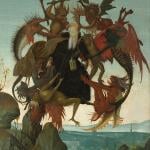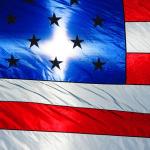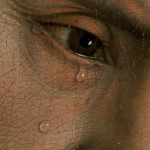RACE, PART ONE: WHERE I’M CALLING FROM. I said I’d be writing a lot about race in America. I’ll be trying to look at it from a bunch of different angles, and it seems like it would be helpful to give people some idea of my own background, since it’s pretty obvious that it’s shaped my view of this stuff.
When I was really young, I thought the majority of Americans were black–I basically thought the whole country had the racial makeup of my neighborhood, which at the time was about 70% black. (I think it’s less now.) I’ve talked a bit about my Afrocentric elementary school before. I have no truck with Kwanzaa, but the school generally presented Afrocentrism as a way to knit black children into a fabric of morality and realistically complex patriotism. In looking back, I see Afrocentrism as practiced there as a mostly positive force, not a divisive one. We all looked up to black heroes, but there was no sense that their heroism could only be emulated by black people; there was no sense that white people were Bad. There was a sense that injustice was a frequent occurrence in American history… but that’s just true, and it never seemed to clash with the aspiration of “liberty and justice for all” that we recited every morning. (Well, OK, I didn’t–I can’t remember if I didn’t say the Pledge at all, or if I just went silent for “under God”; I think I sometimes did one and sometimes the other–and neither did the Jehovah’s Witness girl. But you get the point.) In many ways the emphasis on black history and the struggle for racial equality emphasized to us the ways in which right action requires self-sacrifice: It’s hard to hear of Harriet Tubman’s life, or Fannie Lou Hamer’s, and not want to put oneself at risk to attain justice. There were definitely some racial tensions at the school–one girl was teased (by black kids–the school was somewhere above 90% black, I think) because her father was black and her mother white. It wasn’t a paradise. But given the fact that children tease about anything, I remember the racial teasing as being pretty minimal, and no more malicious than any of the rest of it.
There’s not too much else to tell, really–you get the basic picture. The only thing to add is that in high school, partly because of the history of the particular school I attended (the first integrated school in DC, but by that time it was pricey, overwhelmingly white, and obsessively unhappy about those facts) and partly because of the particular segment of punk stuff in which I moved, I got to see how stupid and paralyzing liberal white guilt can really be. (Firsthand. Blah.) White guilt often begins as manners, which are good–manners require you to pay attention to the people you interact with, treat them well, and be aware of problems they may be dealing with that you are not dealing with. All well and good. But because there is no way to be sufficiently non-racist (colorblindness is not even close to good enough–more on that later), LWG quickly spirals into self-obsessed, self-lacerating uselessness. Zines full of pages and pages of white girls engaging in Self-Critique, “calling themselves” on their racism, sometimes exaggerating it, sometimes wallowing in their own rottenness, but always talking about themselves (uh, ourselves), and never about, you know, actual black people. Especially not as individuals. Black people were symbols–what Richard Brookhiser, I think, called the “Numinous Negro.” Black people, in the abstract, were also highly useful as clubs with which to beat other liberal-white-guilty punks–racism was the most useful charge to use against white guys and girls because it could never be disproven. If you denied it, that showed that you weren’t sufficiently self-aware. (Yes, I am reminded of the Frist pencils/Barry “scandals,” why do you ask?) Black people in real reality tended to be significantly less useful, thus it’s perhaps not surprising that they were more popular in absentia. Real black people tended not to act in satisfyingly symbolic fashion. They tended, in fact, to dislike being numinous. The whole show was full of taboos, unsayables. It was beyond lame, and I think it was harmful for everyone involved. (Click here for a brief discussion of what harm I think it did–look under “learned weakness.”)
So that’s where I’m calling from. I don’t think either the elementary-school or the high-school racial atmosphere are what we should be striving for, though the elementary-school one was a hundred times healthier and closer to the ideal.











